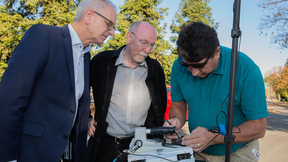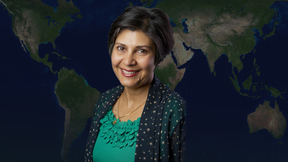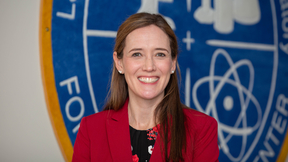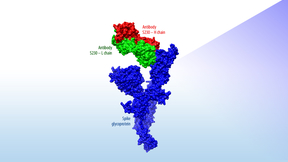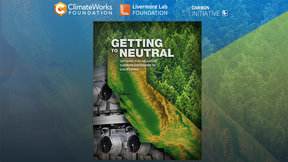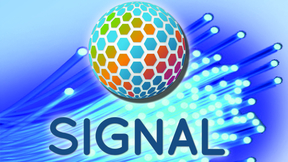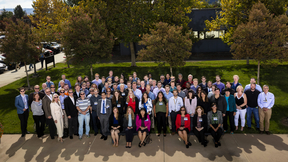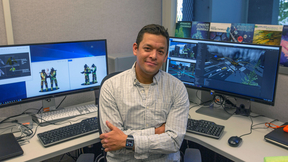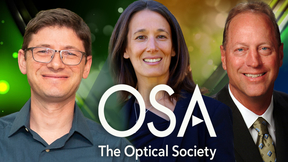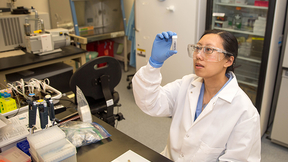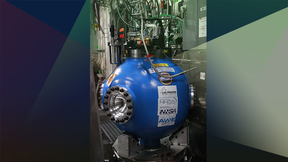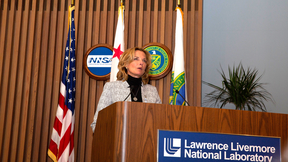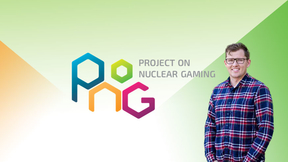Back
Planetary defense researchers at Lawrence Livermore National Laboratory (LLNL) continue to validate their ability to accurately simulate how they might deflect an Earth-bound asteroid in a study that will be published in the April issue of the American Geophysical Union journal Earth and Space Science. The study, led by LLNL physicist Tané Remington, also identified…
A tiny, invisible particle could offer help for a big problem — the threat of nuclear proliferation. For more than six decades, scientists have been developing instruments for fundamental physics that can detect antineutrinos, particles that have no electric charge, almost no mass and easily pass through matter. Antineutrinos are emitted in vast quantities by nuclear…
Lawrence Livermore National Laboratory (LLNL) and Argon Electronics (UK) Ltd. have reached a Cooperative Research and Development Agreement (CRADA) that will facilitate the development of an ultra-realistic radiation simulator tool for first responders. The project, which has been funded by a Department of Energy (DOE) Technology Commercialization Fund (TCF) grant, will…
Huban Gowadia, a longtime manager in national security programs for multiple government agencies, has been selected as the principal associate director of Global Security at Lawrence Livermore National Laboratory (LLNL). Lab Director Bill Goldstein made the announcement on Thursday. Gowadia was chosen for this key Laboratory senior leadership position following a broad…
A chemist who is the director of Lawrence Livermore National Laboratory’s (LLNL) Forensic Science Center is the recipient of the 2020 “Outstanding Early Career Achievement in Forensic Science Award.” The award, given to LLNL’s Audrey Williams, is presented annually by the American Academy of Forensic Sciences (AAFS) Past Presidents Council. This year’s award will be…
As global concern continues to rise about a novel coronavirus spreading from China, a team of Lawrence Livermore National Laboratory (LLNL) researchers has developed a preliminary set of predictive 3D protein structures of the virus to aid research efforts to combat the disease. The team’s predicted 3D models, developed over the past week using a previously peer-reviewed…
Lawrence Livermore National Laboratory (LLNL) scientists have identified a robust suite of technologies to help California clear the last hurdle and become carbon neutral – and ultimately carbon negative – by 2045. This groundbreaking study, “Getting to Neutral: Options for Negative Carbon Emissions in California,” was conducted as part of LLNL’s expansive energy programs…
A wargame developed by University of California, Berkeley students, with a helping hand from Lawrence Livermore National Laboratory (LLNL) and Sandia National Laboratories (SNL) researchers, recently garnered first place at an international conference. The wargame, called SIGNAL, won the “best student game” among five finalists in the Serious Games Showcase and Challenge…
Lawrence Livermore National Laboratory (LLNL) physicist Denise Hinkel has been elected vice chair of the American Physical Society (APS) Division of Plasma Physics (DPP). Her term as vice chair began last month and is the first step in a four-year leadership commitment with APS, which culminates with service as APS-DPP chair in year three. As vice chair, Hinkel will lead…
The Project on Nuclear Gaming (PoNG) is hosting an online playfest for its first game, SIGNAL, a video game focused on understanding the issues surrounding nuclear deterrence and strategic stability. Thousands have signed up to play SIGNAL since the public launch in May 2019 and the experimental wargaming concept has been featured in the Bulletin of the Atomic Scientists…
Once a year, a community of university professors, students and national lab researchers who focus on nuclear science and security gather to share research updates and develop collaborations, among other tasks. Earlier this month, the group — known as the Nuclear Science and Security Consortium (NSSC) — held its 2019 fall workshop at the Laboratory. The 2019 NSSC workshop…
Nascent security challenges, novel scientific discoveries and new technology development opportunities are all part of outer space and in the focus of the Lawrence Livermore National Laboratory's (LLNL) Space Science and Security Program (SSSP). The national security community now refers to space as a “warfighting domain.” As such, it is both integral to the U.S. defense…
"What the Lab’s National Atmospheric Release Advisory Center (NARAC) does is it provides dispassionate science during fearful events." In one sentence, Jay Tilden summed up what NARAC has done for the nation for the past 40 years. Tilden is the National Nuclear Security Administration’s (NNSA) associate administrator for Counterterrorism and Counterproliferation. He joined…
If a radiological dispersal device (RDD), or "dirty bomb," ever explodes in the United States, emergency crews may be better prepared because of a simulator developed by an Lawrence Livermore National Laboratory (LLNL) visualization technologist. Called the RDD Studio, the model was developed by the Lab’s Ryan Chen to provide a detailed simulation of what an optimal…
Lawrence Livermore National Laboratory (LLNL) scientists Félicie Albert, Eyal Feigenbaum and Bruce Warner have been named senior members of the Optical Society (OSA), an international organization for optics and photonics scientists, engineers, educators and business leaders. Senior membership status recognizes members with more than 10 years of professional experience in…
Any single hair from anywhere on the human body can be used to identify a person. This conclusion is one of the key findings from a nearly year-long study by a team of researchers from Lawrence Livermore National Laboratory’s (LLNL) Forensic Science Center (FSC) and Michigan State University. The team’s study, published in Scientific Reports, a journal of Nature Magazine,…
Lawrence Livermore National Laboratory (LLNL) successfully executed its first subcritical experiment since 2003 on Feb. 13 at the Nevada National Security Site (NNSS) U1a facility. The experiment — dubbed "Ediza" — took place deep below the desert floor and was the culmination of a five-year campaign aimed at capturing high-fidelity plutonium data in support of nuclear…
It’s been 40 years since the first emergency phone call came in from the Department of Energy to Lawrence Livermore National Laboratory (LLNL). An accident had occurred at the Three Mile Island nuclear power plant on March 28, 1979 that led to a release of radioactivity into the atmosphere. This is how the National Atmospheric Release Advisory Center (NARAC) was born. Over…
Elusive antineutrinos can help monitor nuclear power plants and other activity The United Kingdom is investing nearly £10 million (about $12.7 million) in a joint project with the United States to harness existing particle physics research techniques to remotely monitor nuclear reactors. Expected to be operational in 2024, the Advanced Instrumentation Testbed (AIT) project…
Technological advances for game engines and cloud architectures are fueling the development of next-generation wargames that can increase insights for policymakers, according to the authors of a paper published today. In an article appearing in the Dec. 21 edition of Science Magazine, researchers from Lawrence Livermore National Laboratory (LLNL), Sandia National…



